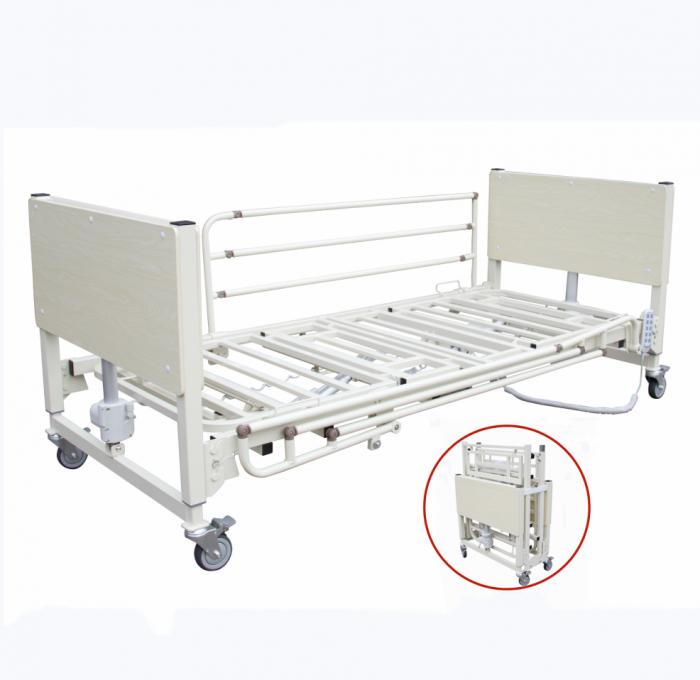Hospital Bed

A hospital bed, also known as a medical or semi-electric bed, is a specialized bed for patients with limited mobility, designed for comfort, safety, and medical care. Key features include adjustable height and sections for the head and feet, side rails for fall prevention, and wheels for easy movement. These features help patients with things like pressure relief, breathing, and making it easier for caregivers to provide assistance.
Key features
Adjustable height: The entire bed can be raised or lowered, making it easier to get in and out and for caregivers to perform tasks.
Adjustable sections: The head and foot of the bed can be adjusted independently, which helps with patient comfort, circulation, and breathing.
Side rails: These are raised or lowered to prevent falls and can provide support for the patient when moving.
Wheels: Locking casters allow the bed to be moved when needed, which is helpful in different care settings.
Electronic controls: Many modern beds use a remote or app for easy adjustments.
Types of hospital beds
Manual: Adjustments are made using a hand crank.
Semi-electric: Head and foot sections are adjusted with a motor, but the height adjustment is manual.
Fully electric: All adjustments, including height, are motorized and controlled by a remote.
Specialized: Options like bariatric beds for larger patients are also available.
Benefits
Patient comfort and support: Adjustability allows for customized positions to relieve pressure and improve comfort.
Safety: Side rails and potential alarms help prevent falls.
Caregiver assistance: The adjustable features make it easier for healthcare providers to care for the patient.
Versatility: Used in various settings, including hospitals, nursing homes, and private homes.
To use a hospital bed, adjust its height and sections with the hand control, always keeping the wheels locked unless moving the bed. Use the side rails for safety, especially when not getting in or out. Keep important items like a call bell within reach and follow the manufacturer's specific instructions for any features.
Bed adjustments
Use the hand control: Use the buttons on the remote control to raise or lower the head, foot, or entire bed height.
Prevent sliding: When sitting up, using both the head and knee raiser buttons creates a better angle to prevent the patient from sliding down.
Lock controls: Some beds have a lock feature to prevent unintended adjustments. Press and hold the padlock button and the desired control button simultaneously to engage and disengage the lock.
Use the manual crank: In case of a power outage, a manual crank is usually located at the foot of the bed to adjust the bed's position. Turn it clockwise to lower and counter-clockwise to raise it.
Safety and positioning
Lock the wheels: Always ensure the bed's wheels are locked unless you need to move the bed to prevent it from rolling unexpectedly.
Use side rails: Keep side rails up for safety, especially when the patient is in bed and not in the process of getting in or out.
Ensure accessibility: Place a call bell or telephone within easy reach for the patient to call for help.
Adjust height for caregivers: Adjusting the bed's overall height can make it easier for caregivers to provide care without straining their backs.
Use proper transfers: To help a person into bed, have them sit on the edge first. Guide them to lie down on their side, hold the bed's edge, and then lift their legs into the bed.
Clear the area: Keep the area around the bed clear and free of tripping hazards.
Special features and maintenance
Mattress considerations: If the bed has an alternating air mattress, do not use thick underlays or electric blankets, as they can interfere with its function.
Refer to instructions: Always follow the manufacturer's specific instructions and troubleshooting information for the bed and any special mattresses.